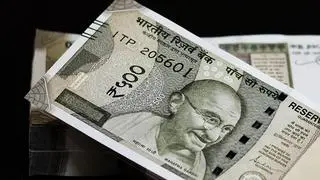The Union Budget for 2021-22, presented as India exiting the grip of the debilitating Covid-19 pandemic, struck a hopeful chord and laid the foundation for a revival in sentiment and growth.
From our vantage point, there are four key takeaways from the Budget. Realistic targets for revenue receipts, combined with transparent accounting for food subsidies, both of which have enhanced the credibility of this year’s budgeting exercise. A clear focus on prioritising precious resources towards health and capital spending, and also creating an enabling environment for augmenting financing for infrastructure. An unavoidable fallout is the sharp fiscal slippage, with both deficits and borrowings exceeding expectations.
In a welcome break from the trend observed over the recent years, the estimates made by the government for its net tax revenues and non-tax revenues in the Revised Estimates (RE) for FY21 and Budget Estimates (BE) for FY22, appear realistic. In particular, the growth of revenue receipts has been budgeted at 15 per cent for FY22, which is in line with nominal GDP growth of 14-15 per cent projected for that fiscal year. In terms of disinvestment, the pipeline is large and market sentiment is buoyant. Regardless, the achievement of the target of ₹1.75 trillion for FY22 will depend on investor interest as well as the timing of the completion of the targeted transactions.
A major reason behind the fiscal deficit for FY21 and FY22 exceeding forecasts is the multi-fold increase in allocation for food subsidy. Providing the entire food subsidy amount through the Budget, instead of funding a portion of the same through loans from the National Small Savings Fund given directly to the Food Corporation of India, has enhanced the transparency of the budgeting exercise.
Focus on critical sectors
The Budget revealed an encouraging reorientation towards the critical sectors of health and infrastructure. The increase in health spending, especially towards the provision of Covid-19 vaccines, will prove to be a booster shot for the economy, helping economic agents regain the confidence to get their lives and livelihoods back on track.
Additionally, the increase in the budgetary outlay for capital spending should create a virtuous cycle of job creation, augmented incomes, and consumption.
Importantly, the Budget has also laid down the framework for creating an enabling environment for enhancing other sources of financing for infrastructure. Early implementation of these proposals will boost sentiment and growth.
The government has announced the creation of an additional vehicle to fund infrastructure projects, by setting up a new Development Financial Institution with a seed capital of ₹20,000 crore. This is expected to target a sizeable lending portfolio of ₹5 trillion in the next three years, rivalling the size of the capital outlay of the government for FY22.
Additionally, to address the funding challenges associated with infrastructure projects, the Budget has focussed on asset monetisation schemes such as REITs and InvITs, for redeploying capital in completed projects and, thereby, strengthening the funding pipeline for new projects.
The banking sector has also seen a number of new announcements. The proposal to divest two PSBs (in addition to the government stake in IDBI Bank) is expected to recharge the participation of the private sector in banking. If successful, additional PSBs can be offered for privatisation in line with the government’s intent to have a few large entities in strategic sectors, including banking. The higher participation of private sector is likely to improve credit delivery further.
Moreover, the proposal to consolidate stressed assets across lenders to the proposed ARC/AMC is expected to result in faster and better resolution of stressed assets of lenders. In this context, the ownership and management of the ARC/AMC, as well as the process of transferring the stressed assets to it from the lenders, will be key monitorables. Apart from improving the reported financials, this will free up the bandwidth of the management of the banking sector to focus on core lending operations.
Lastly, the proposal to allow time-bound access to the depositors of failed banks to the extent of insured deposits, that is, ₹5 lakh per depositor, is a positive development. It is likely to boost confidence among the depositors of private banks, following the recent episodes where depositors were allowed to withdraw much lower amounts when some banks failed.
With realistic revenues, transparency in subsidies and higher capital spending, the fiscal deficit has undergone a sharp upward revision to a massive 9.5 per cent of GDP in FY21. Revenue normalisation has allowed for a modest correction in the deficit to 6.8 per cent of GDP in FY22.
On a cautious note, the glide path for the fiscal correction appears modest, targeting a reduction to below 4.5 per cent of GDP by FY26. This suggests that government borrowings will remain unpleasantly high in the medium term. This will keep bond yields elevated in the absence of frequent and substantial open market operations by the RBI, which will complicate the process of unwinding the prevailing massive surplus in systemic liquidity.
The writer is President-Ratings, ICRA








Comments
Comments have to be in English, and in full sentences. They cannot be abusive or personal. Please abide by our community guidelines for posting your comments.
We have migrated to a new commenting platform. If you are already a registered user of TheHindu Businessline and logged in, you may continue to engage with our articles. If you do not have an account please register and login to post comments. Users can access their older comments by logging into their accounts on Vuukle.